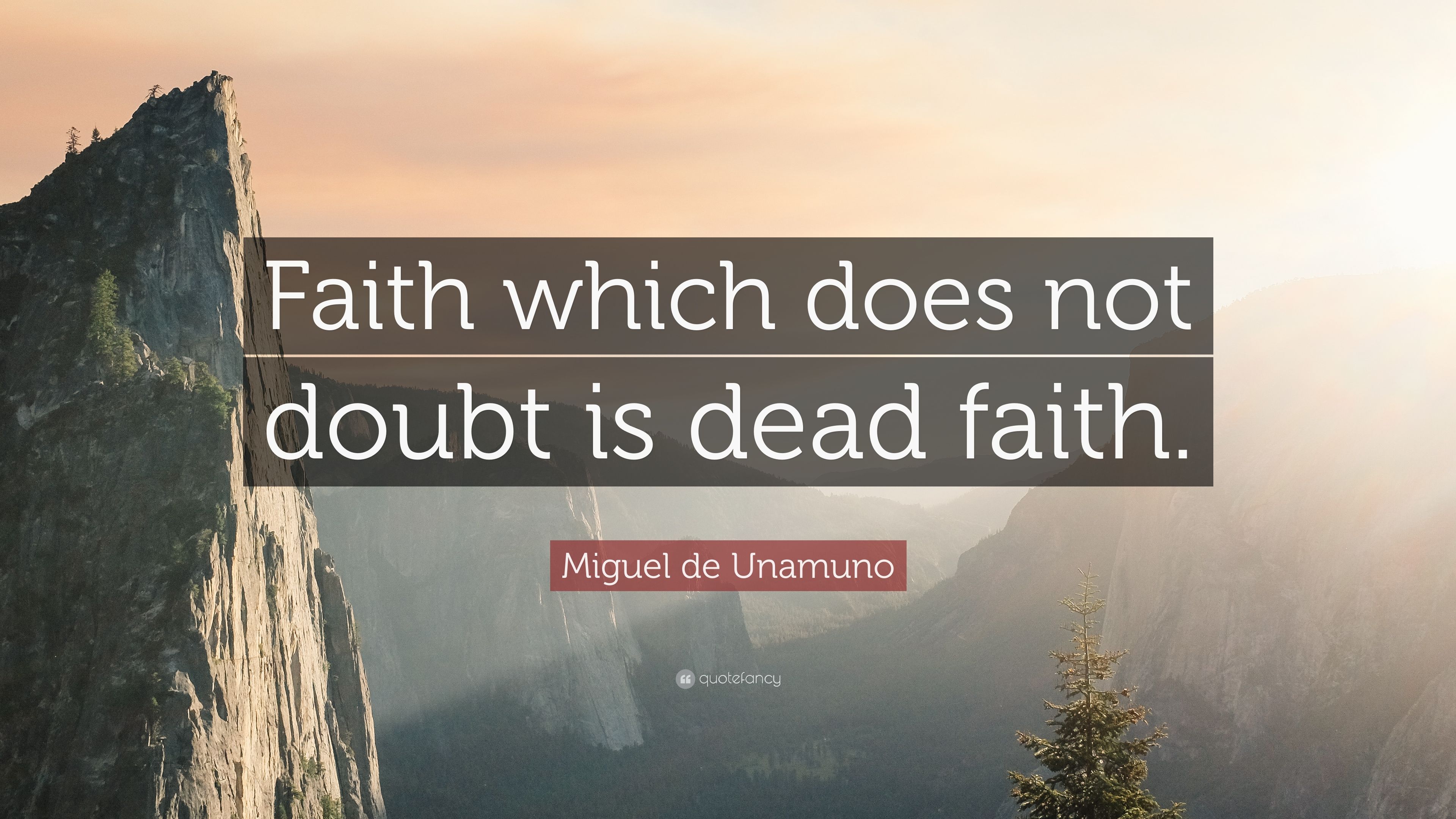Faith & Doubt

About this time of year after Easter, we traditionally read the story from the gospel of John about Thomas. We like to call him Doubting Thomas. And most often pastors set up Thomas as a man whose doubt made him a persons of weak faith. These pastors say that we need to heed Jesus words and believe even though we do not see because doing so makes us blessed. The essential message is that doubt implies lack of faith. So do not doubt. Instead trust and believe what you may not see.
Well, I don’t agree. In fact, I’ll be honest in saying that I have doubts of my own from time to time. And maybe that is something you have never heard a pastor say before. But you see, I have found in my own life that doubt has been a gift that has led me to greater faith.
So I always think Thomas gets a bad rap. Let’s listen to the story again from John 20:19-29…
When it was evening on that day, the first day of the week, and the doors of the house where the disciples had met were locked for fear of the Jews, Jesus came and stood among them and said, “Peace be with you.”
After he said this, he showed them his hands and his side. Then the disciples rejoiced when they saw the Lord. Jesus said to them again, “Peace be with you. As the Father has sent me, so I send
you.”When he had said this, he breathed on them and said to them, “Receive the Holy Spirit. If you forgive the sins of any, they are forgiven them; if you retain the sins of any, they are retained.”
But Thomas (who was called the Twin), one of the twelve, was not with them when Jesus came. So the other disciples told him, “We have seen the Lord.” But he said to them, “Unless I see the mark of the nails in his hands, and put my finger in the mark of the nails and my hand in his side, I will not believe.”
A week later his disciples were again in the house, and Thomas was with them. Although the doors were shut, Jesus came and stood among them and said, “Peace be with you.”
Then he said to Thomas, “Put your finger here and see my hands. Reach out your hand and put it in my side. Do not doubt but believe.”
Thomas answered him, “My Lord and my God!” Jesus said to him, “Have you believed because you have seen me? Blessed are those who have not seen and yet have come to believe.”
All the disciples get to see Jesus after the resurrection, except Thomas. And Thomas is really only asking to have the experience the other disciples had. Yeah, he kinda throws out an ultimatum, but isn’t that ultimatum about wanting to have the same experience of seeing Jesus that the other disciples had? And I think that is a pretty natural, pretty human response. I imagine I would be quite jealous and want to have that experience too.
What we do know is that Thomas is experiencing doubt. We know this because he is honest about it within his faith community, and even lifts his doubt up and pushes it forward. And this is significant.
Pay attention to the story: What leads to Thomas encounter with Jesus?
Answer: His doubt.
I think we Christians often get this story wrong. Yes, Jesus says, “Do not doubt but believe.” Notice that Jesus does not say those words until
- after he appears to Thomas and
- until after he invites Thomas to touch his wounds.
Jesus words are not a commandment against doubting, as if doubt is the opposite of faith. No, Jesus comes to Thomas because of his doubt, invites him to an experience with him, and then encourages him to believe!
And I think that is pretty cool. It says to me, “Hey, do you need an encounter with the resurrected Jesus in your life? Then, be honest about your doubts…share them….pray them…live them….and Jesus will appear to you.”
So I strongly believe that doubts are part of the journey of faith, not an obstacle to faith. Doubt is a gift. It is part of the receiving of faith. Doubt is what deepens faith. Doubt gives faith legs as it pushes us to the limits of our understanding and guides us into a relationship that is deeper than mere belief.
